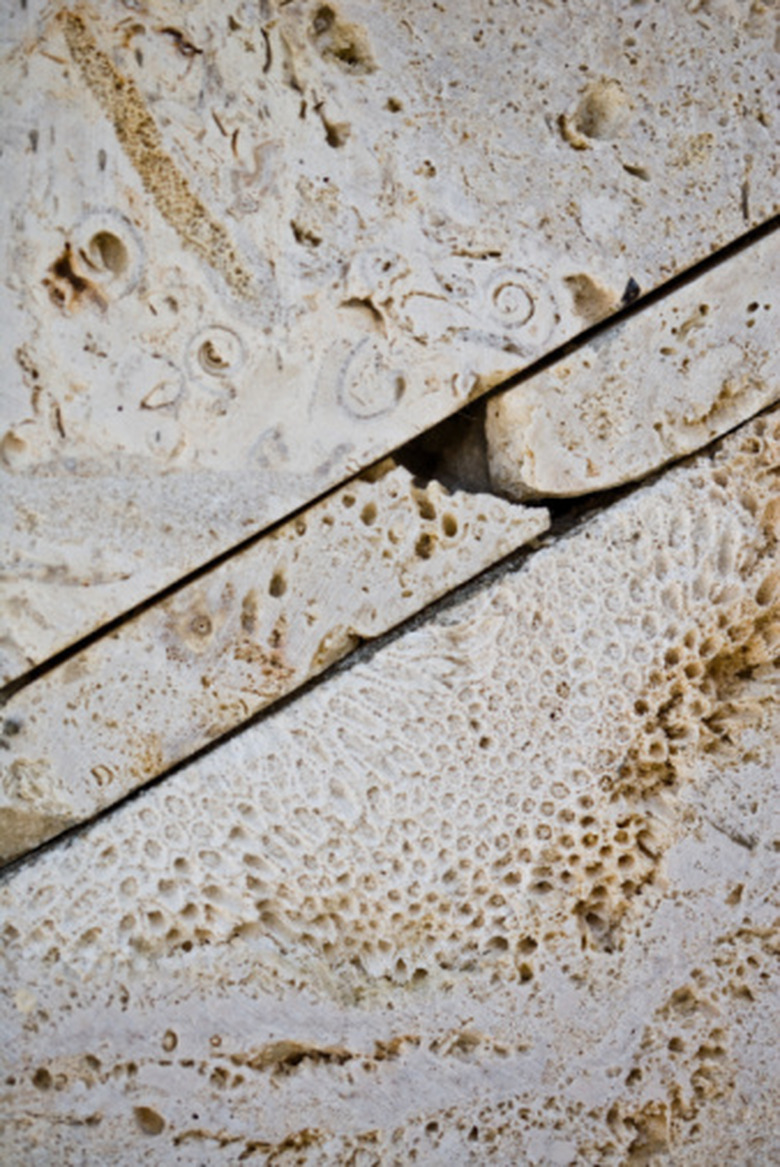What Are The First Eukaryotic Fossils?
When you picture a fossil, you likely imagine dinosaur bones with curved claws, sharp teeth or even protective horns. But there's more to fossils than just dinosaurs! The fossil record helps paleontologists understand evolution and how life on earth began. They use the fossil record to determine where the ancestors of current creatures diverged from their common ancestors. The first eukaryotic fossils allow us to understand where eukaryotes developed from prokaryotes.
Eukaryotes vs. Prokaryotes
Eukaryotes vs. Prokaryotes
To help understand the fossil record more clearly, you must first understand the difference between eukaryotes and prokaryotes. Prokaryotic cells are much simpler than eukaryotic cells. Prokaryotic cells lack a nucleus and typically replicate asexually using RNA rather than DNA. Some examples of prokaryotes are bacteria and archaea.
Eukaryotic cells contain a nucleus and other organelles enclosed within a membrane. In addition to being more complex, eukaryotic cells are also larger than prokaryotes. All fungi, protists, plants and animals contain eukaryotic cells. Eukaryotes also replicate, or reproduce, using sexual reproduction. This allows for more mutation and faster evolution than prokaryotic cells.
How Did Eukaryotes Develop?
How Did Eukaryotes Develop?
Scientists estimate that the first prokaryotic cells emerged about 3.8 billion years ago. Meanwhile, the oldest known eukaryote fossils occur in the area of 2.7 billion years ago. So where exactly did they come from? Well, prokaryotes regularly engulf and consume one another. They don't have mouths, but they essentially absorb the other prokaryotic cell.
This is where scientists believe the first eukaryotic cells may have emerged. The theory is that one prokaryote consumed another, and that engulfed cell became one of the organelles by living within the cell that engulfed it. The cell could now function more competitively than those around it, which aided in increasing its presence in the gene pool and shaping the evolution of modern eukaryotes.
The First Eukaryotic Fossil Evidence
The First Eukaryotic Fossil Evidence
The oldest known eukaryote fossils occur in the Archean Eon time period. The Archean Eon, which spanned the time between 4.6 billion years ago to 541 million years ago, is the period of time during which the first evidence of life appeared on Earth. More specifically, the first eukaryotic fossils appeared about 2.7 billion years ago.
The discovery of eukaryotic biomarkers within 2.7-billion-year-old oil was the first confirmation of eukaryotic cells in the fossil record. This discovery isn't a body fossil, but the presence of a specific fatty acid (sterol) only present in the cell membranes of eukaryotes. Researchers believe that the first eukaryotes were amoeba-like and extremely simple in structure.
The First Eukaryotic Fossil
The First Eukaryotic Fossil
Scientists discovered the first eukaryotic body fossil, a full fossil rather than a biomarker confirming its existence, in the Empire Mine in Ishpeming, Michigan. The 2.1 billion-year-old fossil is a multicellular species of algae, Grypania spiralis.
This marine algae fossil has a thin, thread-like appearance. Though curled, if unwound some specimens would measure over three inches long.
From Unicellular to Multicellular Eukaryotes
From Unicellular to Multicellular Eukaryotes
These early eukaryotes had incredibly simple biology and structure, and consisted of a single cell. Creatures made of one eukaryotic cell are known as unicellular organisms. Some examples of unicellular eukaryotes include yeasts, algae and amoeba. All organisms that contain more than one cell are multicellular eukaryotes.
The first evidence of multicellular eukaryotes occurs about 1.7 billion years ago. Researchers believe that single-celled organisms which congregated together – as is seen in some algae today – gave rise to the first true multicellular organisms. These multicellular organisms evolved into our modern-day plants and animals
The cells of plants have less diversity than those of animals. Simple organisms – such as sponges, which are actually animals – contain just a few different types of cells. Contrastingly, more complex organisms (like humans and other vertebrates) contain a wide variety of different cells that have different functions within the body. For example, the human body contains over 200 different kinds of cells.
Cite This Article
MLA
Zinni, Yasmin. "What Are The First Eukaryotic Fossils?" sciencing.com, https://www.sciencing.com/first-eukaryotic-fossils-8163415/. 20 October 2021.
APA
Zinni, Yasmin. (2021, October 20). What Are The First Eukaryotic Fossils?. sciencing.com. Retrieved from https://www.sciencing.com/first-eukaryotic-fossils-8163415/
Chicago
Zinni, Yasmin. What Are The First Eukaryotic Fossils? last modified March 24, 2022. https://www.sciencing.com/first-eukaryotic-fossils-8163415/
